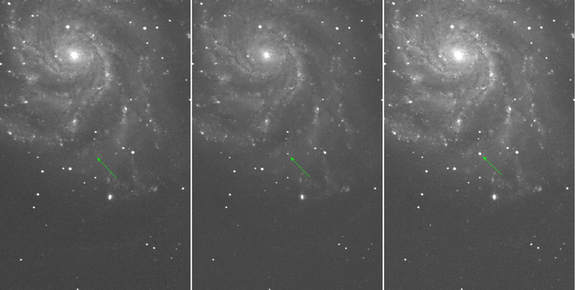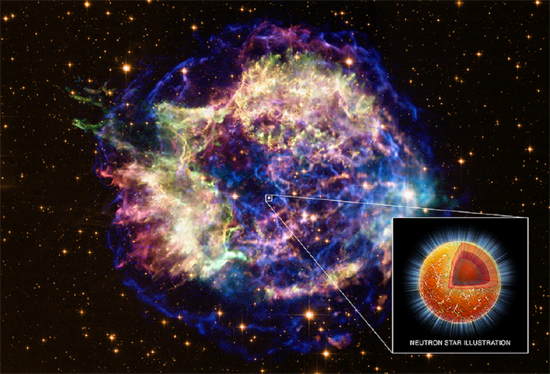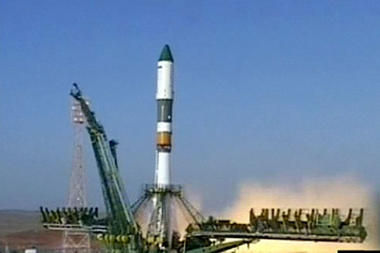
© Peter Nugent and the Palomar Transient FactoryThe arrow marks PTF 11kly in images taken on the Palomar 48-inch telescope over the nights of, from left to right, Aug. 22, 23 and 24. The supernova wasn't there Aug. 22, was discovered Aug. 23, and brightened considerably by Aug. 24.
Astronomers have spotted the closest supernova in a generation - and in a week or so, stargazers with a good pair of binoculars might be able to see it, too.
The
supernova, or exploded star, flared up Tuesday night (Aug. 23) in the Pinwheel Galaxy, just 21 million light-years from Earth. It's the closest star explosion of its type observed since 1986, and astronomers around the world are already scrambling to train their instruments on it.
Researchers said they think they caught the supernova, named PTF 11kly, within hours of its explosion.
"PTF 11kly is getting brighter by the minute. It's already 20 times brighter than it was yesterday," Peter Nugent, of the Lawrence Berkeley National Laboratory and the University of California, Berkeley, said in a statement yesterday (Aug. 25).
"Observing PTF 11kly unfold should be a wild ride," added Nugent, who was the first person to spot the supernova. "It is an instant cosmic classic."




